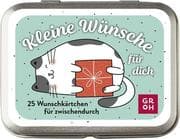First published in 1883 and written by the foremost authority of the era, this extremely influential book offers a brief but concise introduction to Asian art. One of its major themes, the connections between spirituality and the evolution of Asian art, provided the earliest lucid English-language account of Zen Buddhism and its relation to the arts.
Inhaltsverzeichnis
Introduction
The Range of Ideals
The Primitive Art of Japan
Confucianism--Northern China
Laoism and Taoism--Southern China
Buddhism and Indian Art
The Asuka Period (550-700 a.d.)
The Nara Period (700-800 a.d.)
The Heian Period (800-900 a.d.)
The Fujiwara Period (900-1200 a.d.)
The Kamakura Period (1200-1400 a.d.)
Ashikaga Period (1400-1600 a.d.)
Toyotomi and Early Tokugawa Period (1600-1700 a.d.)
Later Tokugawa Period (1700-1850 a.d.)
The Meiji Period (1850 to the present day)
The Vista













